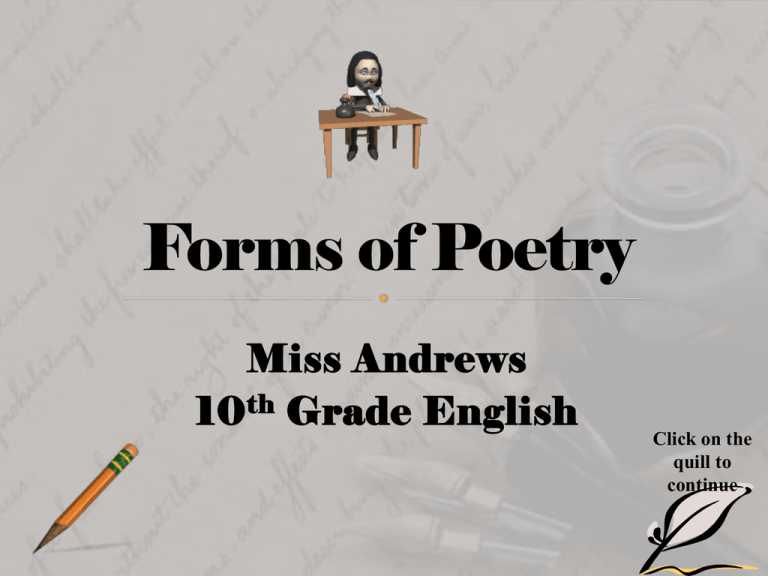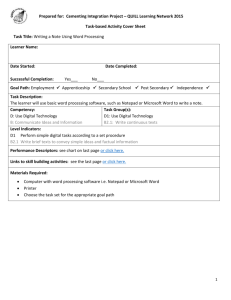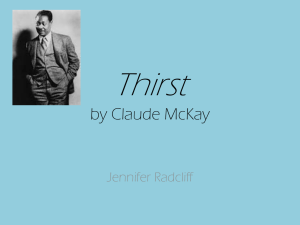Forms of Poetry
advertisement

Miss Andrews 10th Grade English Click on the quill to continue Narrative Poetry that has a plot Length varies Dramatic Written in verse, meant to be spoken Characters are very theatrical; emotional Lyric Short poetic form that is an expression of personal emotion Click on the quill to Has songlike quality; does not have to rhymecontinue to Main Menu Written in first person (not necessarily the poet) Click on the picture under the term to find out more! Elegy Sonnet Epic Haiku Ballad Dramatic Monologue When done looking at the different forms, click on the quill for the review quiz! A poetic form that praises or remembers someone who died Began in Ancient Greece Depicts three stages of loss: Grief and sorrow Praise Comfort Excerpt from an Elegy: W.H. Auden’s “In Memory of W.B. Yeats” “He disappeared in the dead of winter: The brooks were frozen, the airports almost deserted, And snow disfigured the public statues; The mercury sank in the mouth of the dying day. What instruments we have agree The day of his death was a dark cold day.” Click on quill for the Main Menu A prolonged narrative poem, celebrating soldierly heroes and invokes divine inspiration Written in high style Describes great achievements and events Excerpt from an Epic Poem: Homer’s “The Iliad” “And the shivers took hold of Hektor when he saw him, and he could no longer stand his ground there, but left the gates behind, and fled, frightened, and Peleus' son went after him in the confidence of his quick feet.” Click on quill for the Main Menu A poetic form which reads as a light simple song Especially one of sentimental or romantic appeal 2 or more stanzas (stanza is grouping of lines that consists of meter and rhyme) Adapted for singing Excerpt from a Ballad: Wordsworth and Coleridge’s “Lyrical Ballads” “Strange fits of passion have I known And I will dare to tell, But in the Lover’s ear alone, What once to me befel.” Click on quill for the Main Menu Contains Iambic Pentameter (pattern of meter in a sentence, with 5 sets of unstressed/stressed syllables). Contains 14 lines 3 quatrains (stanza of 4 lines) of alternating rhyme Ends in a couplet (2 consecutive rhyming lines with same number of stresses) Excerpt from a Sonnet: Shakespeare's “Sonnet 116” “Let me not to the marriage of true minds Admit impediments. Love is not love Which alters when it alteration finds, Or bends with the remover to remove:” Click on quill for the Main Menu Japanese poetic form 5-7-5 pattern In English, 3 parallel lines; in Japanese, 1 vertical line Poet Basho Matsuo first great Haiku poet Poet Masaoka Shiki reformed Haiku as we it know today Example of Haiku: By Masaoka Shiki “A mountain village under the pilled-up snow the sound of water.” Click on quill for the Main Menu Voice of a historical or fictional character speaks, first person No intervening by a narrator Spoken to silent audience Excerpt from a Dramatic Monologue Lord Alfred Tennyson’s “Ulysses” “I am a part of all that I have met; Yet all experience is an arch wherethrough Gleams that untravelled world, whose margin fades For ever and for ever when I move.” Click on quill for the Main Menu Let’s test your knowledge on poetic forms. Please read the question and poem below. After that, click on the answer you believe is correct. • Question: Which form is the poem below? “Shall I compare thee to a summer's A. day?Epic Thou art more lovely and more temperate: Rough winds do shake the darling buds of May, B.Haiku And summer's lease hath all too short a date: Sometime too hot the eye of heaven C.Elegy shines, And often is his gold complexion dimm'd; D.Sonnet And every fair from fair sometime declines, By chance or nature's changing course untrimm'd; But thy eternal summer shall not fade Nor lose possession of that fair thou owest; Nor shall Death brag thou wander'st in his shade, When in eternal lines to time thou growest: So long as men can breathe or eyes can see, So long lives this and this gives life to thee.” You can do it! Sorry, try again An epic is suppose to commemorate, or describe great achievements or events; this poem does neither. Click on the quill to return to quiz Sorry, try again A characteristic of a Haiku is having a 5-7-5 pattern. This poem does not follow this pattern. Click on the quill to return to quiz Sorry, try again This poem does not honor someone who has died, like an elegy does. Click on the quill to return to quiz Correct! The poem is a Shakespearean Sonnet called, “Sonnet 18.” It has 3 quatrains, is written in iambic pentameter, and ends in a couplet. Great work! Click on the quill to continue You finished the Poetry PowerPoint. You did a great job! Please click on the picture below of Edgar Allen Poe. This will start the PowerPoint for the next student. Thank you!











